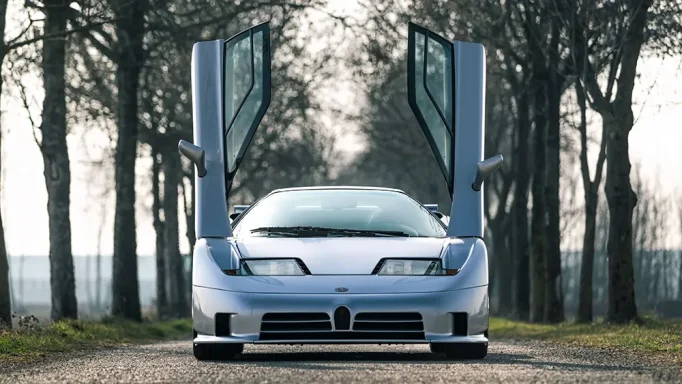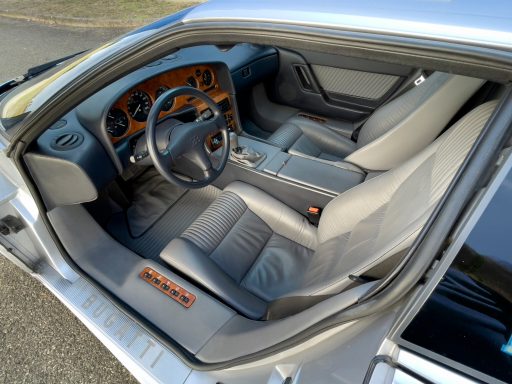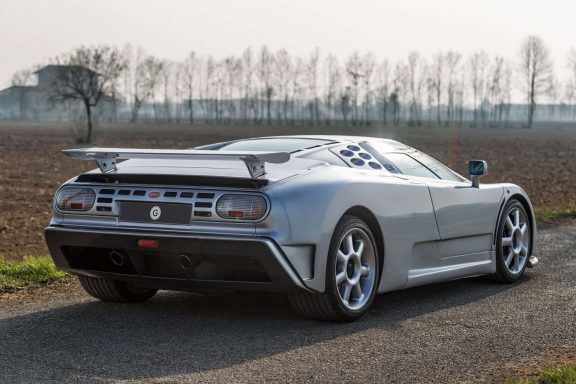Unleashing Power: The Legacy of the First Successful Hypercars
In the realm of high-performance automotive engineering, the emergence of hypercars marked a revolutionary chapter in the history of speed and luxury. These remarkable machines transcend the ordinary, combining cutting-edge technology with breathtaking design. From the iconic Bugatti Veyron to the sleek Ferrari LaFerrari, the first successful hypercars set a new standard for what it means to race at the very pinnacle of performance. Their unapologetic pursuit of speed and power continues to inspire enthusiasts and manufacturers alike, creating a legacy that fuels the dreams of car lovers around the world.
As the Supercar movement evolved over the years, the aspirations of many engineers and designers for Hypercars were often thwarted by impractical ideas and the financial challenges involved in bringing such engineering marvels to life. The 1970s, 1980s, and particularly the 1990s saw a series of unsuccessful efforts to develop the ultimate Supercar. However, these endeavours were not wasted; they were essential missteps. These lessons would pave the way for future Supercar manufacturers to innovate and improve. We were now on the brink of the Hypercar's adolescence.
Bugatti EB110 Supersport
Founded in 1909 by the French designer Ettore Bugatti, Automobiles Ettore Bugatti quickly established itself as a premier luxury car manufacturer in France. Over the next thirty years, the company crafted some of the most stunning and fastest vehicles of the era, including the iconic Type 41 Royale and the 57sc Atlantic. However, following Ettore Bugatti's death in 1947, the production of road cars came to an abrupt halt. For the next 15 years, the company shifted its focus to manufacturing aerospace components, but it wasn't long before it was absorbed by various French aviation firms, leading to the near extinction of the Bugatti brand. The legacy of this once-great car manufacturer lingered only in name. One of the companies that acquired a part of Bugatti was Snecma, a French government-backed aircraft manufacturer, which eventually merged with Bugatti to form Snecma-Bugatti, specialising in aircraft parts in 1977.
In 1986, two visionaries eager to revive the Bugatti legacy joined forces. Ferruccio Lamborghini, the founder of Automobili Lamborghini who had retired to pursue winemaking after selling his stake in 1976, and Paolo Stanzani, the former chief engineer at Lamborghini and the mastermind behind the Muira and Countach, shared a dream of creating the most advanced supercar of their time. They aimed to utilise only the finest materials and cutting-edge technologies, free from the constraints of established automotive giants. To achieve this, they needed access to top-tier designers and engineers, which were scarce in Bugatti's original location of Molsheim, France. However, they realized that by establishing the company in Campogalliano, Italy, near Modena, they could tap into a wealth of talent from renowned manufacturers like Ferrari, Lamborghini, Maserati, and DeTomaso, many of whom would be eager to work with Stanzani and Lamborghini.
A suitable location was secured, and construction of the new factory along with adjacent racetracks commenced. Mauro Forghieri, the designer of Lamborghini's early V12 engine used in the Diablo, was brought on board to contribute to this ambitious project.
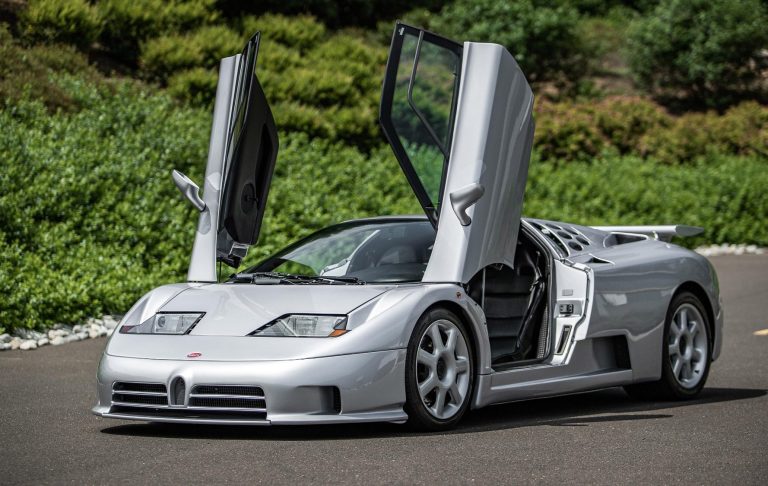
McLaren F1
Formula One designer Gordon Murray had a vision for a three-seater Hypercar and sought the support of Ron Dennis, the then CEO, Chairman, and Founder of the McLaren Technology Group. Ron agreed to back the project and brought in Peter Stevens, known for his work on the Lotus Elan, the updated Lotus Esprit, and the Jaguar XJR-15, to bring Murray's concept to life.
Before long, the F1 prototype, initially named the McLaren XP5, was completed and quickly broke the Guinness World Record for the fastest production car, previously held by the Jaguar XJ220 at 217.1 mph (349 km/h). The F1 achieved an impressive top speed of 240.1 mph (386.4 km/h), a record it maintained for seven years, and even today, only a few Hypercars equipped with forced induction have surpassed it.
The F1 was remarkably lightweight and aerodynamic, constructed from materials like carbon fibre, magnesium, Kevlar, and even gold. Its unique carbon-fibre monocoque chassis featured three seats: two in the rear and one centrally located for the driver. Under the hood, it housed a powerful, track-focused 6.1-liter BMW V12 engine. Initially, McLaren sought a power unit from Honda, as the McLaren/Honda Formula One team was dominating the sport at the time. However, Gordon Murray insisted on a naturally aspirated engine, which led Honda to decline. McLaren then turned to Isuzu, who were considering entering Formula One as an engine supplier. Although Isuzu showed interest, their lack of racing history and association with truck engines prompted McLaren to withdraw. Ultimately, BMW came on board.
In total, 106 F1s were produced, including 64 road versions (F1s), 5 tuned variants (LMs), 3 Longtails (GTs), 28 track-focused models (GTRs), and 6 various prototypes. Even more than 25 years after its launch, the F1 remains one of the fastest naturally aspirated production cars in the world.
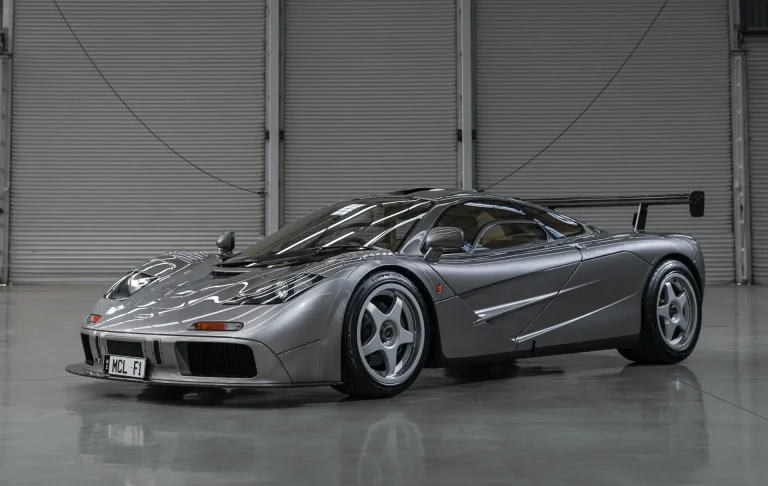

Pagani Zonda C12 S
Horacio Pagani, the former head of Lamborghini's composites division, established Pagani Composite Research in 1988. Over the years, his company collaborated with Lamborghini on several projects, such as the 25th Anniversary Countach, the LM002, and the Diablo. While maintaining this strong partnership with Lamborghini, Pagani began to create his own dream car, which he called the "C8 Project." He intended to produce it as the "Fangio F1" to honour his dear friend, Juan Manuel Fangio, a five-time Argentinian F1 champion.
By 1992, Pagani started building the prototype for the Fangio F1, and in 1994, Mercedes-Benz reached out to him with an offer to provide V12 engines for his project. The final version of the car was unveiled at the 1999 Geneva Motor Show, where Horacio renamed it the Zonda C12, dropping the Fangio F1 title following Fangio's passing in 1995. The C12 was equipped with a 6.0-liter Mercedes M120 V12 engine, capable of accelerating from 0 to 60 mph (97 km/h) in just 4.0 seconds and reaching 100 mph (161 km/h) in 9.2 seconds. Only five of the original 6.0 L C12s were produced, including one designated for crash testing, which has since been restored to its original condition by Pagani Rinascimento, the company's restoration program.
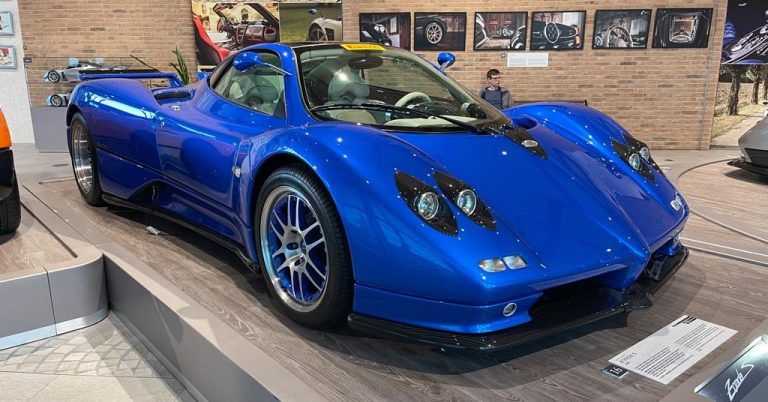

Saleen S7 Turbo
Steve Saleen, a driver in the Formula Atlantic series, established Saleen Autosport in 1983 and crafted their first three race cars the following year. In 1986, he equipped a Ford Mustang with a centrifugal supercharger and entered it into the Sports Car Club of America Race Series, quickly achieving victory at the 24 Hours of Mosport.
With a reputation for enhancing the performance of existing vehicles, Saleen decided to create his own car. The S7 made its debut in August 2000 during the Monterey Historic Races. This model featured a heavily modified Ford 351 Windsor small block engine, delivering 750 horsepower and capable of reaching speeds of 248 mph (399 km/h).
The S7 was one of the early examples of a Hypercar, designed not only for speed but also for luxury and everyday usability. Its interior boasted leather and aluminium details, an LCD monitor, a rear-view camera, and custom luggage.
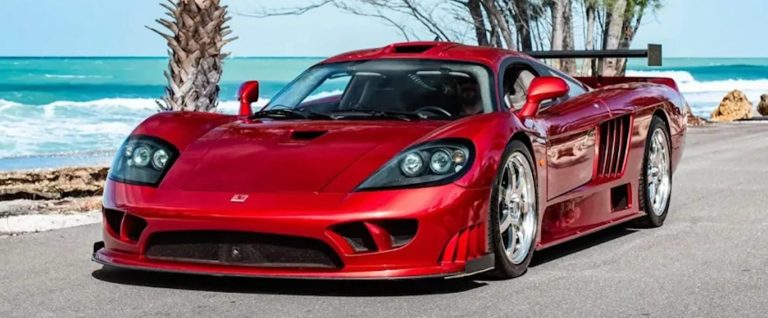
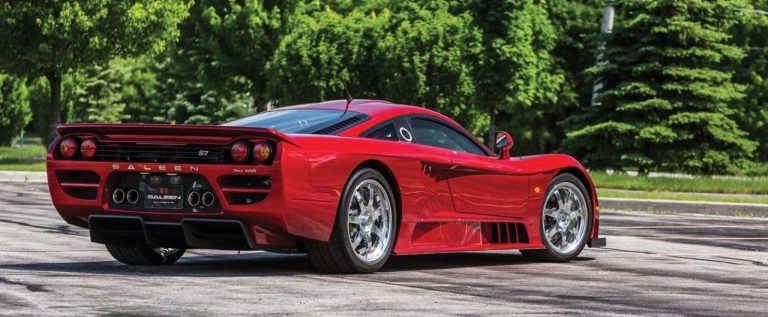
Ferrari Enzo
Only 400 units of the Ferrari Enzo were manufactured, each featuring a 5,998 cc V12 engine derived from the Maserati Quattroporte. This powerful engine is housed within an aluminium honeycomb chassis and incorporates cutting-edge Formula One technology of its time, such as electrohydraulic shift transmission, traction control, carbon fibre-reinforced silicon carbide (C/SiC) ceramic composite brakes, and active aerodynamics.
What truly set the Enzo apart was its active aerodynamics. The adjustable rear spoiler and rear diffuser worked together to create significant downforce, reaching up to 1,709 lb/f at a speed of 186 mph (299 km/h).
The Enzo boasts impressive acceleration, going from 0 to 60 mph (97 km/h) in just 3.14 seconds and hitting 100 mph (161 km/h) in 6.6 seconds. Its top speed is an exhilarating 218 mph (350 km/h).

Koenigsegg CC8S
Founder Christian von Koenigsegg established the Koenigsegg brand in Sweden in 1994. His inspiration to create a Hypercar stemmed from watching the animated film Pinchcliffe Grand Prix every Christmas during his childhood. After launching a trading company that exported food from Europe to developing nations, Christian finally had the financial resources to pursue his lifelong dream.
The development of the first car progressed at a sluggish pace. By 1997, the need for larger production facilities arose, prompting Christian to purchase a farm near Ängelholm. However, development faced a setback when one of the farm's buildings was destroyed by fire. In response, Koenigsegg quickly acquired an abandoned airfield, complete with two fighter-jet hangars that had previously housed the “Johan Röd" squadron and their iconic ghost symbol. These hangars were transformed into the factory, while the airfield became a testing ground for Koenigsegg.
Progress continued, and in 2002, 18 years after the company's inception, Koenigsegg unveiled its first Hypercar, the CC8S. This model boasted several distinctive features, including a storable Targa roof and vertically opening doors known as dihedral-synchro helix actuation doors. The CC8S could accelerate from 0 to 62 mph (0 to 100 km/h) in just 3.5 seconds and reach a top speed of 240 mph (390 km/h).
The CC8S received immediate acclaim, earning the Guinness World Record for the most powerful production engine. Orders and inquiries poured in, but Christian chose to produce only six units of the CC8S, opting instead to focus on an upgraded version, which would become the CCX, in 2004. These six cars would set the standard for Koenigsegg's capabilities over the next two decades.
Later, former pilots from the Johan Röd squadron approached Christian, asking if he would consider adopting the now-defunct Ghost Symbol as a tribute to their squadron for his growing factory. He agreed, and from the CCX onward, all Koenigsegg vehicles would feature the ghost symbol.
The Koenigsegg emblem was created in 1994 by Jacob Låftman, drawing inspiration from the heraldic coat of arms of the Koenigsegg family. This shield has represented the family since the 12th century, originating from a time when a family member received knighthood from the Holy Roman Empire in Germany.
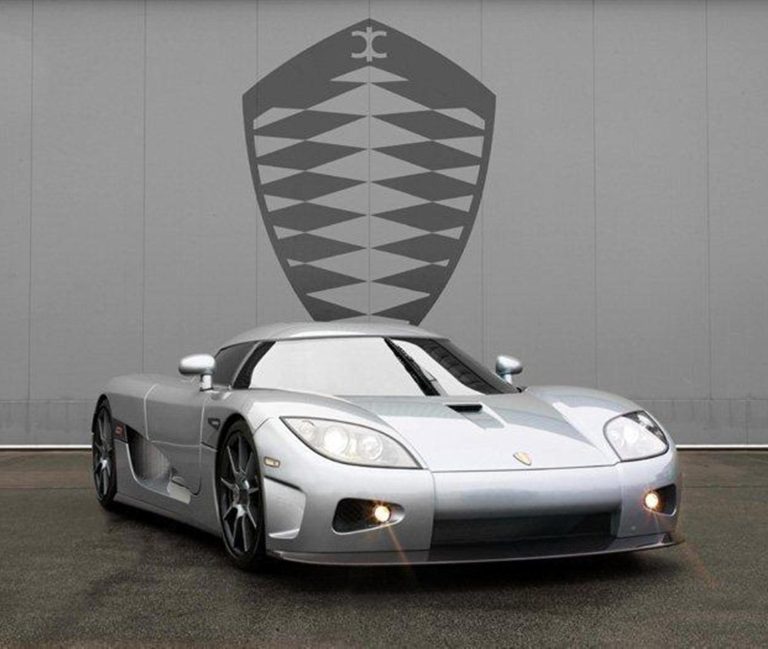

Porsche Carrera GT
In 1999, a shift in FIA regulations marked the end of Porsche's GT racers and Le Mans prototypes, specifically the 911 GT1 and the LMP1-98. In reaction to this change, Porsche began developing a prototype to take their place, known as Project 980.
Although the prototype was completed and ready for testing, featuring a larger 5.7-liter V10 engine that Porsche had originally designed for the Footwork Formula One team eight years earlier, the project was ultimately put on hold. After only two days of testing, Porsche, along with its parent company Volkswagen/Audi, decided to redirect their engineering efforts towards the development of their first SUV, the Cayenne, rather than continuing in motorsport.
However, the concept was not entirely abandoned. Porsche showcased the 980's V10 in a concept car at the 2000 Paris Motor Show to attract more visitors to their exhibit. The public's interest quickly shifted to the prototype on display, leading Porsche to reconsider. After further discussions, they opted to produce a road-legal version of the car, resulting in the creation of the Carrera GT, which hit the market in January 2004. The GT boasted an impressive top speed of 205 mph (330 km/h) and could accelerate from 0 to 60 mph (97 km/h) in just 3.5 seconds.

Maserati MC12
Maserati created the MC12 to re-enter the FIA's GT Championship after a 37-year hiatus from racing. This model was largely based on Ferrari's Enzo, featuring a modified version of the Enzo's 6.0-liter V12 engine, along with the same gearbox, chassis, and windscreen. While the competition variants achieved some success, the MC12's larger dimensions—being taller, wider, heavier, and longer than the Enzo—caused it to surpass the size limits set by the American Le Mans Series, which negatively impacted its performance during extended races. Maserati produced fifty road versions, marking a brief foray into the Hypercar market, but these models received mixed feedback due to their increased size, high price, and challenging handling. The road-going MC12 could accelerate from 0 to 62 mph (0 to 100 km/h) in just 3.8 seconds and had a top speed of 205 mph (330 km/h).

Bugatti Veyron
In May 1998, Volkswagen A.G. acquired the rights to the Bugatti name and logo, following the closure of Bugatti Automobili S.p.A. over two years earlier, which marked the end of production for the last Bugatti Hypercar, the EB110. To celebrate the revival of the Bugatti brand, Volkswagen quickly introduced a series of concept cars, all featuring the W18 engines designed by VW. The first of these, the EB118, made its debut at the 1999 Frankfurt Motor Show as a two-door coupe equipped with a four-wheel-drive system derived from the Lamborghini Diablo VT. A year later, at the Geneva Motor Show, a modified version called the Bugatti 218 was unveiled. Although both concepts were ready for production, Volkswagen aimed to create a more high-performance vehicle, leading to the decision to keep the EB118 and EB218 as mere concepts.
Later that same year, at the Tokyo Motor Show, Bugatti showcased its latest concept supercar, the Veyron, named after the renowned Bugatti factory driver Pierre Veyron. The initial concept boasted a 6.3-liter, 18-cylinder engine producing 555 horsepower, with impressive claims of a 0-60 mph time of 5.3 seconds and a top speed of 186.4 mph. Over the next two years, VW/Bugatti engineers refined the Veyron, equipping it with a W16 engine—essentially two V8s positioned at a 90-degree angle—and adding four turbochargers along with a double-clutch seven-speed transmission. This transformation resulted in an additional 400 horsepower, bringing the total to an astounding 1,001 bhp. Two production-ready prototypes were created, slightly longer than the eventual production models, and they garnered significant acclaim as they toured various auto shows around the world.
In the following four years, Bugatti developed a total of 11 prototypes, rigorously testing them under extreme conditions while continuously enhancing the design. Ultimately, in 2005, the Bugatti Veyron entered production, and in October of that year, German officials recorded an average top speed of 253.81 mph (408.47 km/h) at Volkswagen's specially designed Ehra-Lessien test track. Official performance figures for the car were released concurrently, marking a significant milestone in automotive history.


Gumpert Apollo
In 2000, Roland Gumpert, who was leading sales and marketing for the Audi-VW dealer network in China, shared his vision for a new vehicle. His goal was straightforward: create a car that was street legal but could also seamlessly transition to a racetrack for competitive racing. Audi embraced Gumpert’s initiative and provided the Audi V8 4,163 cc bi-turbo engine for the project.
To bring his concept to life, Gumpert sought collaboration with the Technical University of Munich and the Ingolstadt University of Applied Sciences. By October 2005, the Gumpert Apollo made its debut, available in three engine variants: the base model with 641 bhp, the Sport version boasting 690 bhp, and a full race version delivering 789 bhp. The base model alone achieved a top speed of 223.9 mph (360.4 km/h) and accelerated from 0 to 62 mph (0 to 100 km/h) in just 3.1 seconds, thanks to its lightweight design of only 1,100 kg and a superlight carbon-fibre body. Simulations from the University of Munich indicated that the Apollo's innovative engineering and advanced aerodynamics would enable it to drive upside down in a tunnel, provided it maintained a speed above 190 mph, although this claim has never been verified for obvious reasons.



SSC Ultimate Aero TT
The SSC Ultimate Aero was manufactured by SSC North America between 2006 and 2013, featuring a 6.2-litre supercharged V8 engine from Chevrolet Corvette that produced an impressive 908 horsepower. This remarkable vehicle earned the Guinness World Record for the fastest production car, achieving an official top speed of 256.18 mph (412.28 km/h) and maintaining that record for three consecutive years.
While many Super and Hypercars are marketed as "driver's cars," the Ultimate Aero truly embodies this concept, as it was specifically engineered for a pure driving experience. It comes without any electronic driving aids, such as anti-lock brakes or traction control, emphasising the driver's skill and connection to the road.


Aston Martin One-77
Aston Martin unveiled its second Hypercar in full at the 2009 Geneva Motor Show. The One-77 featured a powerful 7.3-liter V12 engine, a 6-speed transmission, and suspension components derived from the DB9, all housed within a carbon fibre chassis crafted by Multimatic in Canada. Production was limited to just 177 units, with the One-77 achieving a top speed of 220.007 mph (350 km/h) and accelerating from 0 to 60 mph (97 km/h) in only 3.5 seconds.

